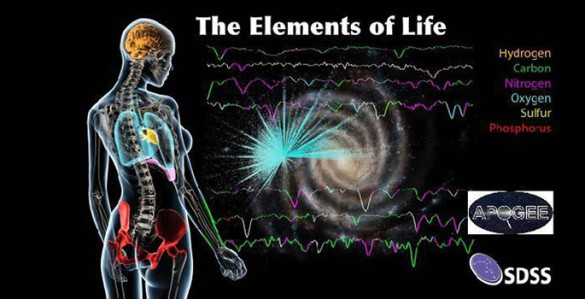
To say “we are stardust” may be a cliché, but it’s an undeniable fact that most of the essential elements of life are made in stars.
At the American Astronomical Society (AAS) meeting on Jan. 5, astronomers from the Sloan Digital Sky Survey (SDSS) announced results of a new study showing how the abundance of these “elements of life” varies across our Milky Way — results that can help untangle the complex history of the galaxy.
Jon Bird, a post-doctoral fellow in physics at Vanderbilt University who works on modeling the Milky Way, explained that “these data will be useful to make progress on understanding galactic evolution, as more and more detailed simulations of the formation of our galaxy are being made, requiring more complex data for comparison.”
“For the first time, we can now study the distribution of elements across our galaxy,” said Sten Hasselquist of New Mexico State University. “The elements we measure include the atoms that make up 97 percent of the mass of the human body.”
The new results come from a catalog of more than 150,000 stars; for each star, it includes the amount of each of almost two dozen chemical elements. The new catalog includes all of the so-called “CHNOPS elements” — carbon, hydrogen, nitrogen, oxygen, phosphorous and sulfur — known to be the building blocks of all life on Earth. This is the first time that measurements of all of the CHNOPS elements have been made for such a large number of stars.
The new catalog is already helping astronomers gain a new understanding of the history and structure of our galaxy, but the catalog also demonstrates a clear human connection to the skies. As the famous astronomer Carl Sagan said, “We are made of starstuff.” Many of the atoms which make up your body were created sometime in the distant past inside of stars, and those atoms have made long journeys from those ancient stars to you.
The catalog of chemical abundances from which these maps were generated has been publicly released as part of the Thirteenth Data release of the SDSS, and is available freely online to anyone at http://www.sdss.org.
Excerpted from SDSS news release: http://astrobiology.com/2017/01/the-elements-of-life-mapped-across-the-milky-way-by-sdssapogee.html